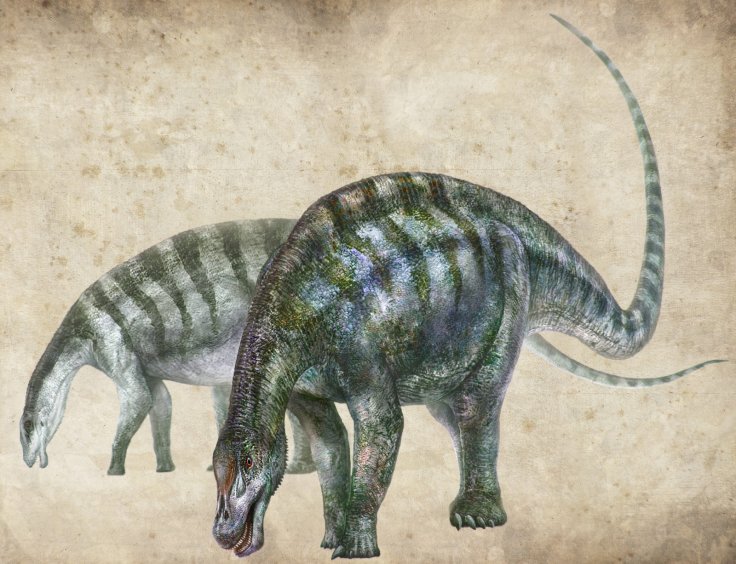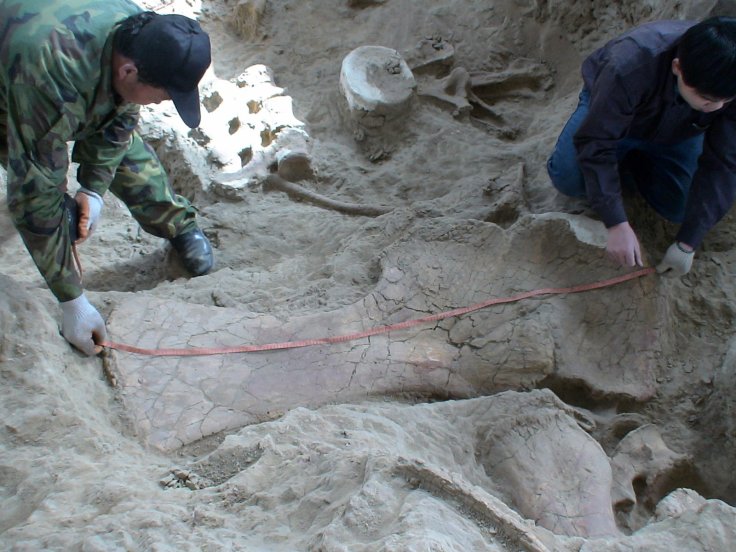
The vegetarian dinosaurs sauropods, what you have seen in the Jurassic Park movie, known as the largest animal that ever walked on earth. That group of long-necked dinosaurs has already included other beasts such as Brachiosaurus, Brontosaurus, Apatosaurus, and Diplodocus but now the palaeontologists in China are going to add another name of a similar species in that list after the new discovery.
A study published in the journal Nature Communications, has showed that scientist have found a new fossil of a dinosaur on a hillside in north-western China that is forcing the palaeontologists to rethink about the history of largest dinosaurs.
After the discovery of long-still bones of at least eight to 10 previously unknown creatures, now the researchers have been able to classify is as a new Chinese species of sauropod and named it Lingwulong shenq or the "amazing dragon of Lingwu."
The researchers stated that even though this newly found fossil of the dinosaur is not as big as others in that largest dinosaur group, still this creature has its own significant as this is an early member of the well-known group of plant-eating dinosaurs that lived 174 million years ago during the Jurassic Period.
Palaeontologist Xing Xu of the Chinese Academy of Sciences, who led the study said that this particular species was about 57 feet (17.5 meters) long. The researchers also believe that like other sauropods it would have spent the majority of its life while travelling in small groups and depending on vegetation.
Scientists also claimed that Lingwulong is the first member of its evolutionary family, which is known as Diplodocoidea to be discovered in the East Asian region. The study also included that the new discovery has challenged the conventional biogeographical ideas, and suggested that the dispersal into East Asia occurred much earlier than researchers expected.
It also added that that age of "this new taxon indicates that many advanced sauropod lineages originated at least 15 million years earlier than previously realised, achieving a global distribution while Pangaea was still a coherent landmass."

As reported by Reuters, Paul Upchurch, the co-author of the study and the palaeontologist from University College London clearly stated that earlier they though that these advanced sauropods originated around 160 million years ago "and rapidly diversified and spread across the planet in a time window perhaps as short as 5 million years."
In addition, he also added that but the discovery of "Lingwulong means that this hypothesis is incorrect and we now have to work with the idea that, actually, this group and its major constituent lineages originated somewhat earlier and more gradually."
However, if this newly found Jurassic creature actually belong to the diplodocoid family, then the further challenge will add a new chapter, which will include that how these dinosaurs were spread all over the world when the earth had only one but a huge landmass and was called Pangaea.









